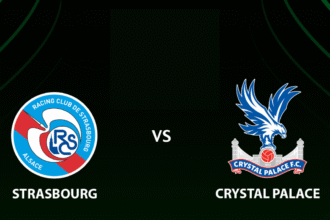As February 14 approaches, lovebirds everywhere eagerly anticipate celebrating Valentine’s Day, a day dedicated to expressing affection and appreciation for loved ones. Alongside the traditional sentiments of love and romance, the colors associated with Valentine’s Day also take center stage, adding vibrancy and meaning to the occasion. But what do these colors symbolize, and how do they influence the way we celebrate this special day?
Valentine’s Day, also known as Saint Valentine’s Day or the Feast of Saint Valentine. Is celebrat annually on February 14th. While its origins are steeped in historical and mythological lore. The holiday has come to symbolize love. Romance. And the celebration of relationships. The colors associated with valentine’s day colors—pink, red, and white—play a significant role in conveying these sentiments.
Pink, Red, and White: The Colors of Valentine’s Day
Pink, red, and white are the quintessential hues of Valentine’s Day, adorning everything from flowers and chocolates to cards and decorations. Each color carries its own unique symbolism, reflecting different facets of love and affection.
Pink, a delicate and charming shade, represents tenderness, innocence, and affection. It embodies the softer side of love, making it ideal for expressing feelings of friendship and familial affection. Whether it’s a bouquet of pink roses or a heartfelt card adorned with pink hearts, this color exudes warmth and sweetness.
Red, the color of passion and desire, is synonymous with romantic love. It evokes strong emotions and intensity, symbolizing the fiery ardor shared between lovers. From crimson roses to heart-shaped balloons, red captures the essence of romance and infuses Valentine’s Day with passion and excitement.
White, the color of purity and innocence, complements the vibrant hues of pink and red. It signifies purity of heart and eternal love, making it a popular choice for wedding ceremonies and romantic gestures. White roses, in particular, symbolize sincerity and undying devotion, making them a timeless expression of love on Valentine’s Day.
The significance of these colors extends beyond mere aesthetics; they are deeply intertwined with the history and mythology surrounding valentine’s day colors. Stories of love and sacrifice, both ancient and modern, imbue these colors with rich symbolism and meaning.
Pink, Red, and White in Mythology and History
The origins of valentine’s day colors are shrouded in legend and myth. With various stories attributing its name to different historical figures and events. One popular legend links the holiday to Saint Valentine, a priest martyred for defying Emperor Claudius II Gothicus’s orders. Another tale credits the Bishop of Terni, also named Valentine, with performing secret marriages for young couples. Regardless of its origins, Valentine’s Day has become synonymous with love and romance, and its associated colors reflect this sentiment.
In Greek mythology. The colors pink. Red. And white are intertwin with tales of love and passion. The story of Aphrodite and Adonis, for example, recounts how the goddess of love’s blood stained a white rose red, symbolizing the transformative power of love and desire. Similarly, the festival of Lupercalia, an ancient Roman celebration of fertility, featured rituals involving the colors red and white, further cementing their association with love and romance.
The Color Dress Code of Valentine’s Day
In addition to their symbolic significance. The colors of Valentine’s Day also serve as a form of nonverbal communication. Allowing individuals to express their emotions and relationship status through their attire. The concept of a “color dress code” for Valentine’s Day offers a playful yet meaningful way to convey one’s feelings without saying a word.
- Red: “I’m in Love” Red signifies passion and romantic love, making it the perfect choice for those already in love and committed to their partners.
- Yellow: “Broke Up” Yellow represents hope and renewal, making it an apt choice for those who have recently experienced a breakup but remain optimistic about the future.
- Orange: “I’m Going to Propose” Orange exudes warmth and enthusiasm, signaling an intention to take the next step in a relationship by proposing marriage.
- Blue: “Proposals Invited” Blue conveys openness and receptivity to new relationships, making it suitable for those who are single and open to romantic proposals.
- Pink: “Proposal Accepted” Pink symbolizes sweetness and affection. Indicating that a proposal has been accept and reciprocated with joy.
- Black: “Proposal Rejected” Black represents mourning and closure. Signaling that a proposal has been reject or that one is not actively seeking romantic involvement.
- Green: “I’m Waiting” Green symbolizes patience and hope. Indicating that one is awaiting a response to a romantic proposal or gesture.
- White: “I’m Engaged” White signifies purity and commitment. Indicating that one is already engaged or committed to a long-term relationship.
- Purple or Grey: “I’m Not Interested” Purple or grey conveys indifference or disinterest in romantic pursuits. Indicating that one is content with being single or not actively seeking a relationship.
- Brown: “Broken Hearts” Brown represents sadness and heartache, indicating that one has recently experienced a breakup or loss of love.
Also Read : “Expressing Love: Valentine’s Day Shayari in English”
In Conclusion
As Valentine’s Day approaches. The colors of love—pink. red. and white—take on added significance. Symbolizing the myriad emotions and sentiments associated with this special day. Whether expressing passion. Affection. Or longing. These colors serve as a visual reminder of the power of love to transform our lives. So, whether you’re celebrating with a romantic partner. Friends. Or family. Let the colors of Valentine’s Day inspire you to express your love and appreciation in meaningful ways.







